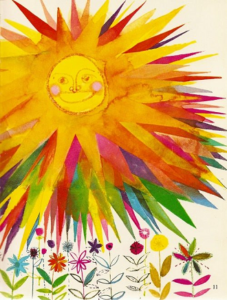
The wrath and tranquility of the soul
The Stoic Seneca not only wrote Wrath but
also about the Tranquility of the soul, you can find a current edition with his other book “the tranquility of the soul”, does not mean the absence of restlessness, pain or errors.
He writes in his book I, still about Anger: “Thus, some wise men said that anger is a brief insanity. She is equally unrestrained, alien to decorum, forgetful of emotional ties, persistent and clinging to what she started, closed to reason and advice, incited by vain reasons, incapable of discerning what is just and what is true, very similar to something that collapses and collapses. it shatters on top of what it has crushed.” (Seneca, 2014, p 91).
Although we can hide feelings, Wrath strips us bare, animal ferocity is even shown in appearance, since its “control” argued by some authors is uncertain: “But to prove the insanity of those in the power of wrath, observe the wrath itself. their appearance, as clear symptoms of madmen are the bold and threatening appearance, the sinister countenance, the slanted face, the hurried step, the restless hands, the changed color, the successive sighs…” (Seneca, 2014, p 91).
He is not unaware that other passions can also expose us: “I am not unaware that other passions are also difficult to hide; that lust, fear and audacity give signs of themselves and can be sensed.” (p. 92), but these also emerge amid widespread anger.
He does not ignore Aristotle’s vision, as some authors hastily assume: “To be harmful, we are all powerful. Aristotle’s definition is not far from ours. For he states that anger is the desire to return pain. Finding the difference between this definition and ours would require a long explanation” (p. 94), so he also knows that there are differences.
Without going into exaggerated altruism, he knows that we are irascible, subject to some anger, but he explains it like this: “It has been sufficiently explained what anger is. How it differs from irascibility is evident: as a drunkard differs from someone who is intoxicated, and a fearful person from someone who is afraid” (p. 95), so there is an angry person, who may sometimes not be angry.
It examines whether anger is our nature, and thus in some way necessary, for example for correction, differentiates it: “But this without anger, based on reason, for it is not harmful, but it heals under the appearance of being harmful” (p. 97), it is the doctor who cures, not how to take revenge.
But was it sometimes useful? Remember that “The beginning of certain things is in our power, their subsequent stages overwhelm us with their strength and do not allow for return” (p. 98) and this is also the cause of injustices that awakens new anger and new furies, so it does not cure. Brian Wildsmith’s sun is powerful but benevolent (his drawing above).
Seneca. (2014) Sobre a ira. Sobre a tranquilidade da alma diálogo, transl. José Eduardo S. Lohner, 1a ed. São Paulo, Brazil: Penguin Classics, Companhia das Letras. (pdf in portuguese)










